By Rick VanSickle
Niagara, in fact, all of Ontario, is a petri dish for wine experimentation. There are no limits to what can be attempted — sometimes with disheartening results and other times the results can be simply stunning.
Amelie Boury’s first Vin Jaune is the latter, a truly remarkable “yellow” wine made from the estate’s rarely grown in North America Savagnin grape, a vinifera native to the Jura region of France that Chateau des Charmes on the St. David’s Bench has been growing in Niagara since 1993.
Note: Also in this report, Pigs are flying again (André Prouxl’s new rosé), plus Niagara wines hitting shelves at Vintages Saturday and Niagara wines up for auction
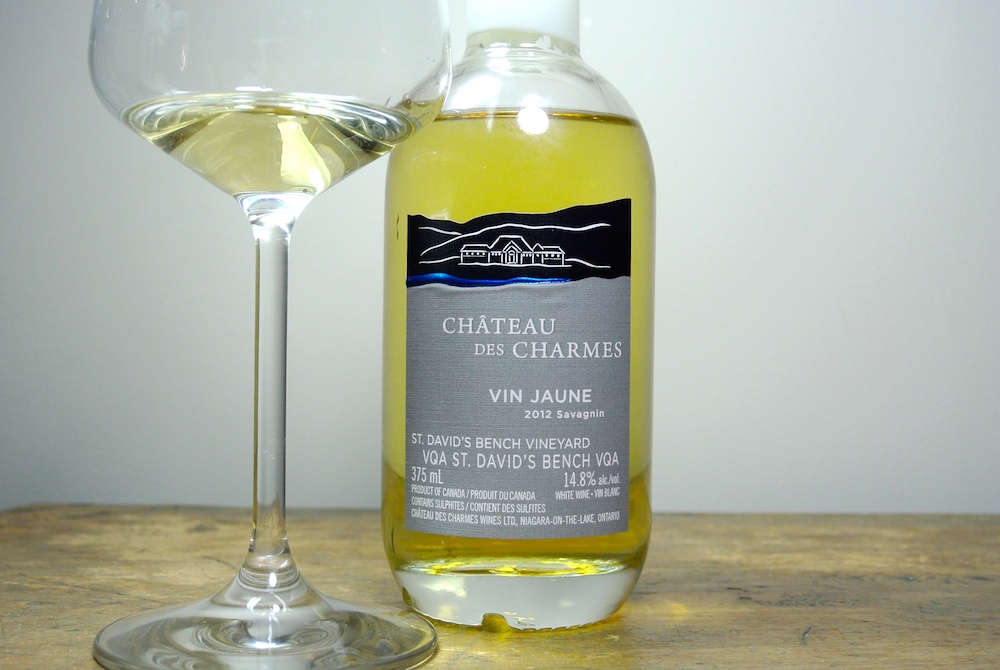
Boury, vice-president of winemaking and operations at Chateau des Charmes, began her quest to make this style of wine, one that she herself adores, in 2012. The estate only has 10 rows planted in St. David’s Vineyard, on the west side of the Chateau, so she would have to convince Paul Bosc Sr. to allow her to experiment.
“I had the chance to spend time in Jura in the summer of 2012 and I came back thinking ‘I have Savagnin at CdC, I want to give this a try and see if I can make it!,’ ” Boury told Wines In Niagara.
When she approached Bosc, it turns out he had spent time in Jura and had experimented on making sherry-style wines when he was much younger. He was all for Boury embarking on the long journey to make Niagara’s (Canada’s??) first Vin Jaune.
Traditional Vin Jaune is made from Savagnin that’s been aged under a veil of yeast or ‘voile’, protecting it from over-oxidation and giving it its characteristic flavours, which Boury describes as “very fresh and clean with lots of yellow apple, straw, and nuts on the flavour profile, with bracing acidity, and a long mineral finish.”
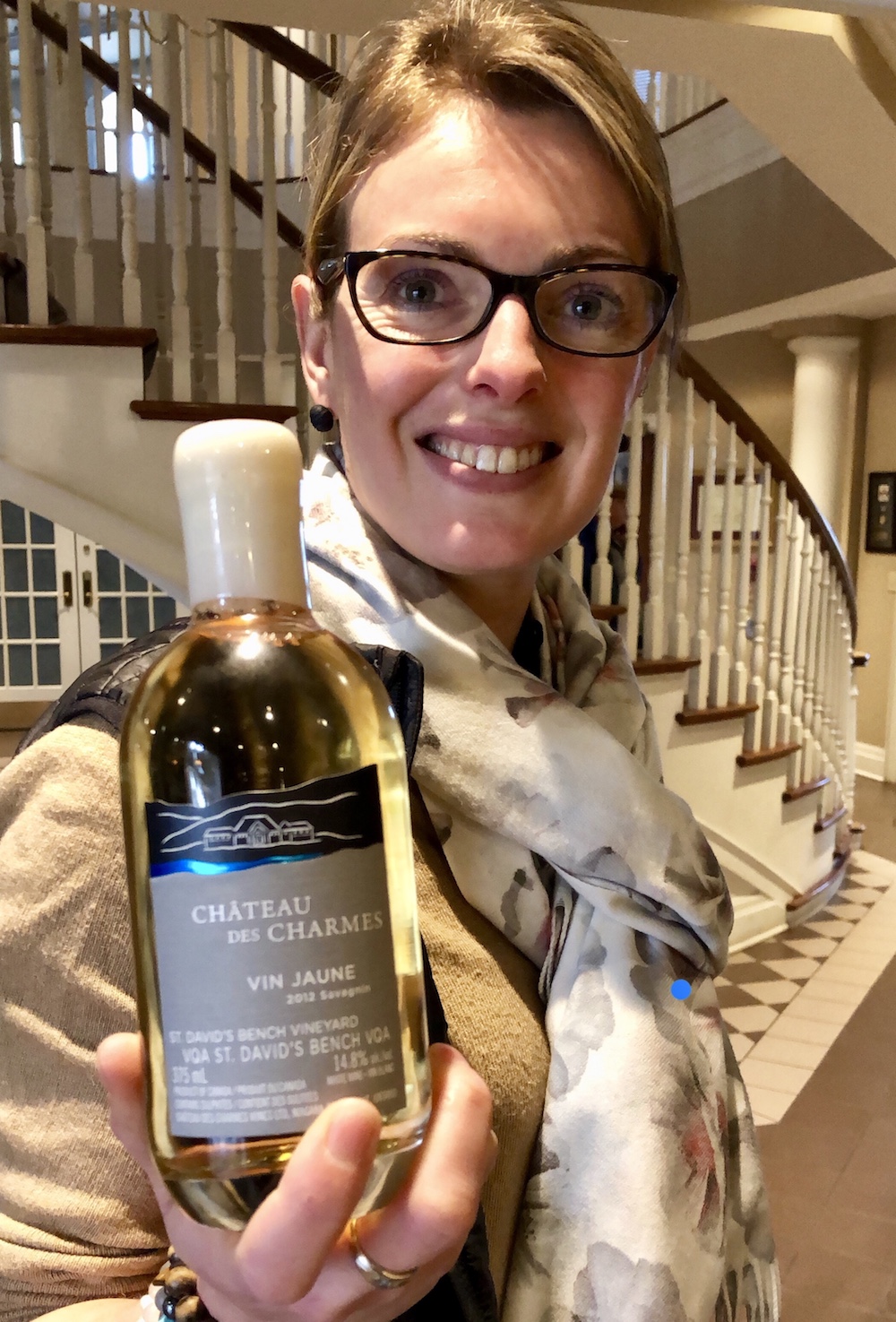
Her Vin Jaune (Boury above) is made from extremely ripened Savagnin grapes placed in a 228-litre Burgundian barrel for six years and three months. What is especially unique in the winemaking process, said Boury, aside from the extended aging time, is that the barrels are not stored in a stable cellar environment, instead they are stored in spaces which are well ventilated and subject to temperature fluctuations. Her two barrels were placed in the press room, where the temperature fluctuates with the seasons.
The barrel is never topped off as it is done throughout the traditional winemaking process, which allows a yeast film to develop in the barrel, called “le gout du jaune” or voile.
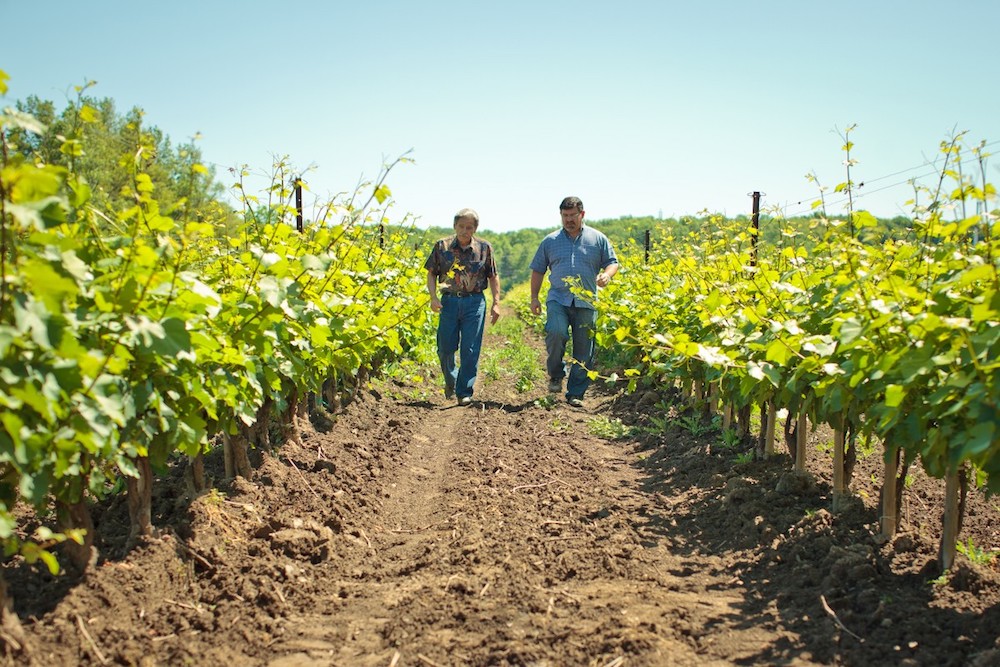
“It is very challenging to maintain the quality of the wine and keep the voile intact during the six-year aging process and if the film is torn, the contents of the barrel are destroyed.”
After 6 years in barrel, more than 40% of the initial volume evaporates.
I asked Boury a few questions about her astoundingly delicious Vin Jaune. Here are her answers.
Wines In Niagara: You were obviously thinking about making this Vin Jaune long before the whole “orange” and “natural” wine movement in Niagara (Canada) was taking hold. What were the early beginnings of making this style of wine in Niagara? Have you always been a fan of the Jura wines, or was it an opportunity to use the rarely grown Savagnin that grows on estate vineyards?
Answer: There was definitely no inspiration from Orange or Natural wine movement. I have always been fascinated with two regions in France, Beaujolais and Jura. These are two regions that do not get enough credit for the hard work and beautiful wines that they produce. In France, most people ignore these regions when they discuss wine regions.
I had the chance to spend time in Jura in the summer of 2012 and I came back thinking ‘I have Savagnin at CdC, I want to give this a try and see if I can make it!’
Wines In Niagara: I would have loved to be a fly on the wall at the meeting where you first proposed to the family (Paul Sr., Paul Jr. and Michele) that you wanted to take some of the 10 rows of the precious Savagnin grown at the estate to make Vin Jaune from the excellent 2012 vintage. Did it take some convincing, or was the family on board since the beginning of the project?
Answer: That isn’t exactly how it happened. Paul Sr. and I are both passionate about experimenting. When I returned from France that summer and explained to him that I would like to try to make a Vin Jaune, he began reminiscing about the great times he spent in Jura with Henry Maire (major contributor to the Jura wine industry), and how he liked to make Sherry in his younger days … so, it did not take much convincing! And it was a great opportunity to learn about something I had never made before. There is something very special about the voile and a lot of science behind it. Different chemical reactions happen and so there are different parameters to look at, compared to a classic white wine … there was an opportunity for both of us to learn more and more.
This project stayed “behind the cellar walls” until recently. The convincing part came once the six years were up and I wanted to put it on the market, as it is not a traditional product!
Wines In Niagara: Have you tasted a wide cross-section of Jura Vin Jaune and did you have a particular style you wanted to make and did it turn out the way you wanted?
Answer: I have tasted a few from my cellar — Rolet, Berthet-Bondet, Macle … they were my reference. I’m very proud of how mine turned out for a first timer!
Wines In Niagara: What was the biggest challenge making this wine?
Answer: Patience! Waiting for the voile to grow was a stressful time. I remember winemakers in Jura telling me that sometimes it doesn’t work, and the barrel will just never become Vin Jaune. Once the voile has developed, you have to be patient, observe it, slow down the variation of temperatures throughout the seasons and measure the quantity of acetaldehyde produced.
This is the most important compound contributing to the organoleptic characteristics.
Wines In Niagara: How should people approach this wine? Is it an aperitif, a food wine, after dinner treat or just a contemplative sipper to enjoy under the stars with friends? What food would you pair with it?
Answer: It can be any of those! I have enjoyed this wine with many different meals and on many different occasions. You have to find the pairing you love, but, in my opinion, it is a wine that needs to be paired with something. The classic pairing of Vin Jaune and Comte cheese is my go-to.
I would also suggest pairing Vin Jaune with a blue cheese, pear and walnut salad as a starter; with a main I would do a “Poulet au Vin Jaune” (chicken breasts with a creamy sauce made with the Vin Jaune); for dessert I would suggest a walnut and caramel tart, and for a night under the stars, a great cigar!
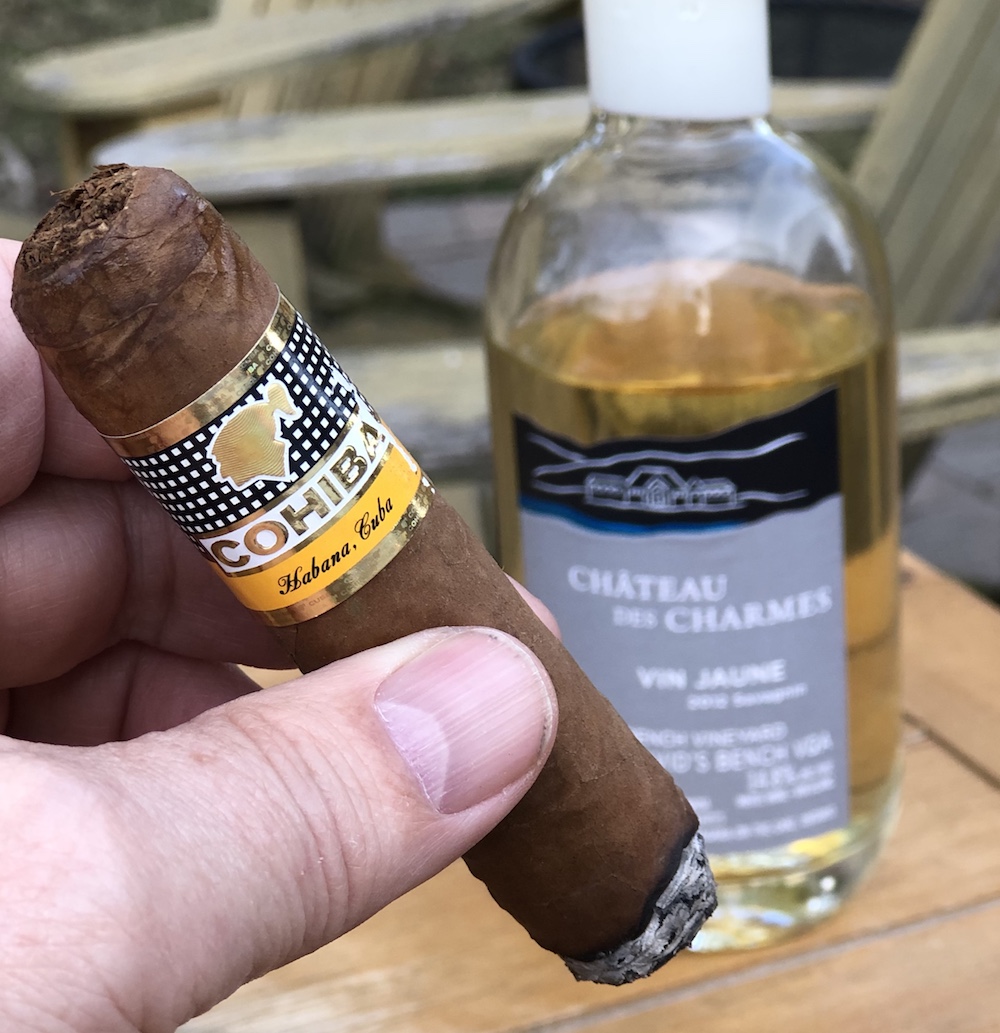
Chateau des Charmes Vin Jaune Savagnin 2012 ($50 for 375 mL, 93 points) — It comes in a white-wax dipped 375 mL clear bottle that pours a golden colour in the glass. It has an immediate nose of fino Sherry with note of honeysuckle, white pepper, salinity, flinty minerality, bread, lemon verbena, subtle nuttiness and cream. The acidity on the palate is nervy and electric, which gives this wine such a tangy, lemon zesty profile in support of grapefruit, crushed stones, umami, earthiness, roasted almonds and dried apricots that is all together focused and poised to age into a blockbuster of a wine that is so unlike any other. I tasted this, on Boury’s recommendation, with both aged Comté cheese and a Cuban Cohiba robusto cigar — both pairings blew me away.
Pigs are flying again
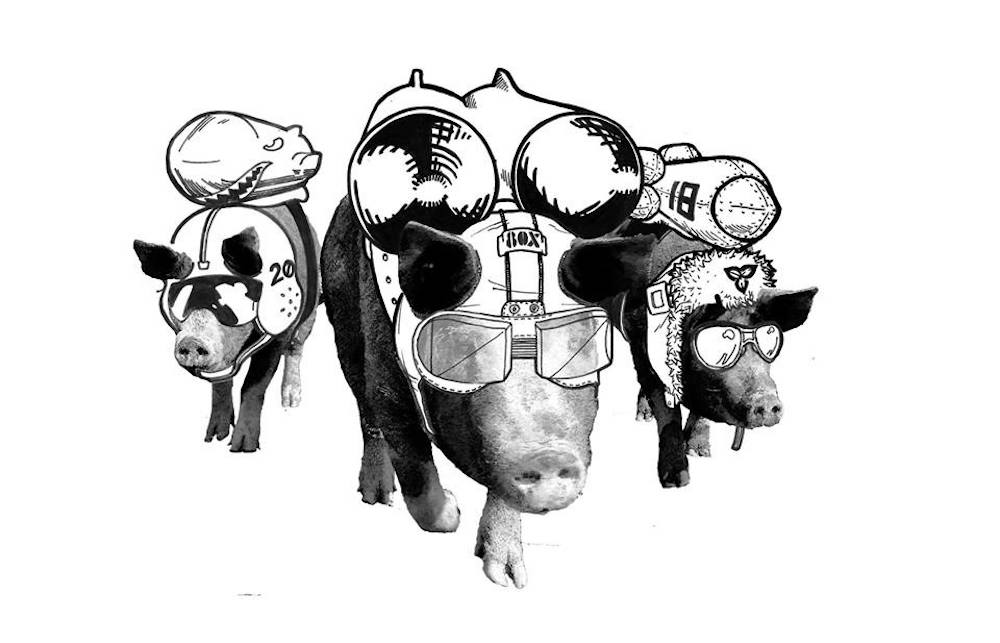 When Pigs Fly Rosé 2018 ($20, available at Rockway winery, 89 points) — Toronto wine writer André Prouxl isn’t content to just taste and wax lyrical about other people’s wines, he’s embarked on sideline to make his own wines (with a little help from his friends) from select Niagara Vineyards. For this second vintage of rosé, Proulx sourced the Pinot Noir from the Vieni Vineyard in the Vinemount Ridge sub-appellation and enlisted Vadim Chelekhov, assistant winemaker at Kacaba, to make the wine.
When Pigs Fly Rosé 2018 ($20, available at Rockway winery, 89 points) — Toronto wine writer André Prouxl isn’t content to just taste and wax lyrical about other people’s wines, he’s embarked on sideline to make his own wines (with a little help from his friends) from select Niagara Vineyards. For this second vintage of rosé, Proulx sourced the Pinot Noir from the Vieni Vineyard in the Vinemount Ridge sub-appellation and enlisted Vadim Chelekhov, assistant winemaker at Kacaba, to make the wine.
“We aim to make tasty wine that reflects where it came from. Rosé is the only wine we intend on making every year — so if no one else likes it we need to make sure we’ve got something we will drink,” Proulx says.
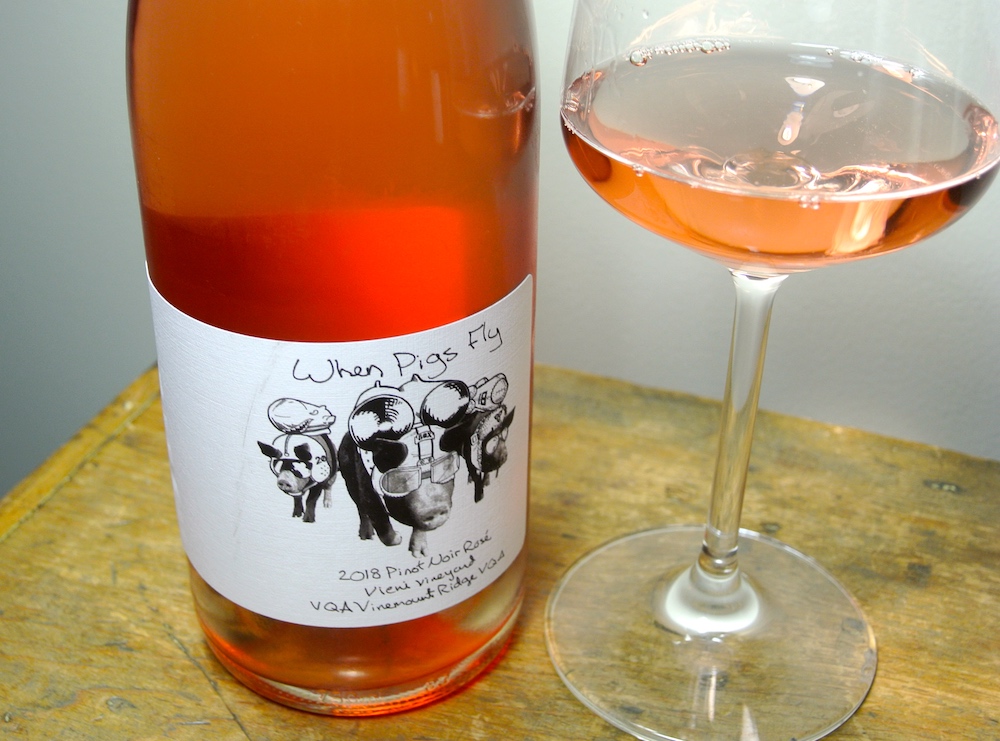
It shows a medium pale salmon colour in the glass with an inviting nose of crushed red berries, watermelon and just a whiff of citrus. It’s more robust on the palate and made in a refreshingly dry style (under 4 g/l of RS) with raspberry bramble, cherries, cranberries, integrated herbs and a vibrant finish. Crushable rosé.
Niagara wines at Vintages Saturday

Redstone Limestone Ridge Sauvignon Blanc 2016 ($25, 90 points) — This oak-aged Sauvignon Blanc has a rich and opulent nose of apple, pear, grapefruit and lemon with a spicy edge. The palate reveals more complex flavours of gooseberry, pineapples, melons and spice through a vibrant finish.
Also released, but not reviewed:
• Featherstone Four Feathers 2018 ($15)
• Henry of Pelham Speck Family Reserve Chardonnay 2017 ($30)
• Redstone Limestone Vineyard South Riesling 2016 ($20)
• Reif Reserve Gewurztraminer 2016 ($20)
• Hinterbrook Nomad Pinot Noir 2016 ($20)
• Jackson-Triggs Grand Reserve Merlot 2016 ($26)
• Peninsula Ridge Beal Vineyard Cabernet Rosé 2018 ($15)
Vintages Classics Collection
There’s only one Canadian wine in the May edition of Vintage’s online Classics Collection. We have a review below and it can be ordered here.
Organized Crime The Download 2012 ($45, 92 points) — Only former winemaker Ross Wise knows for sure how much of the grapes were kiln dried for this big, powerful red from Organized Crime. The blend is nearly half Cabernet Sauvignon and the rest Petit Verdot, Merlot and Cabernet Franc. It has a “wow” nose of deep, rich black currants, plums, cassis, anise, sweet tobacco, cocoa and punctuated by rich oak barrel spices. It is ripe and generous on the palate with the full spectrum of dark, ripe fruits, structured tannins, earth, dark chocolate and baking spices. It is a big wine that still needs time in the cellar to mellow and round out, but the wait will be well worth it. Or drink now with grilled red meats.
Niagara wines hitting the auction block
The Waddington’s Fine Wine Auction takes place May 6-14 online only and this event features two lots of Niagara wines, a rare event for wine auctions in Ontario.
I’m intrigued by the Stratus Red 2007 and how it’s holding up 15 years later. It was one of the first wines reviewed on this website and comes from the warm 2007 vintage.
Here’s what you can bid on (note: reserves show the minimum price you would have to pay and the sky is the limit on the upper end):
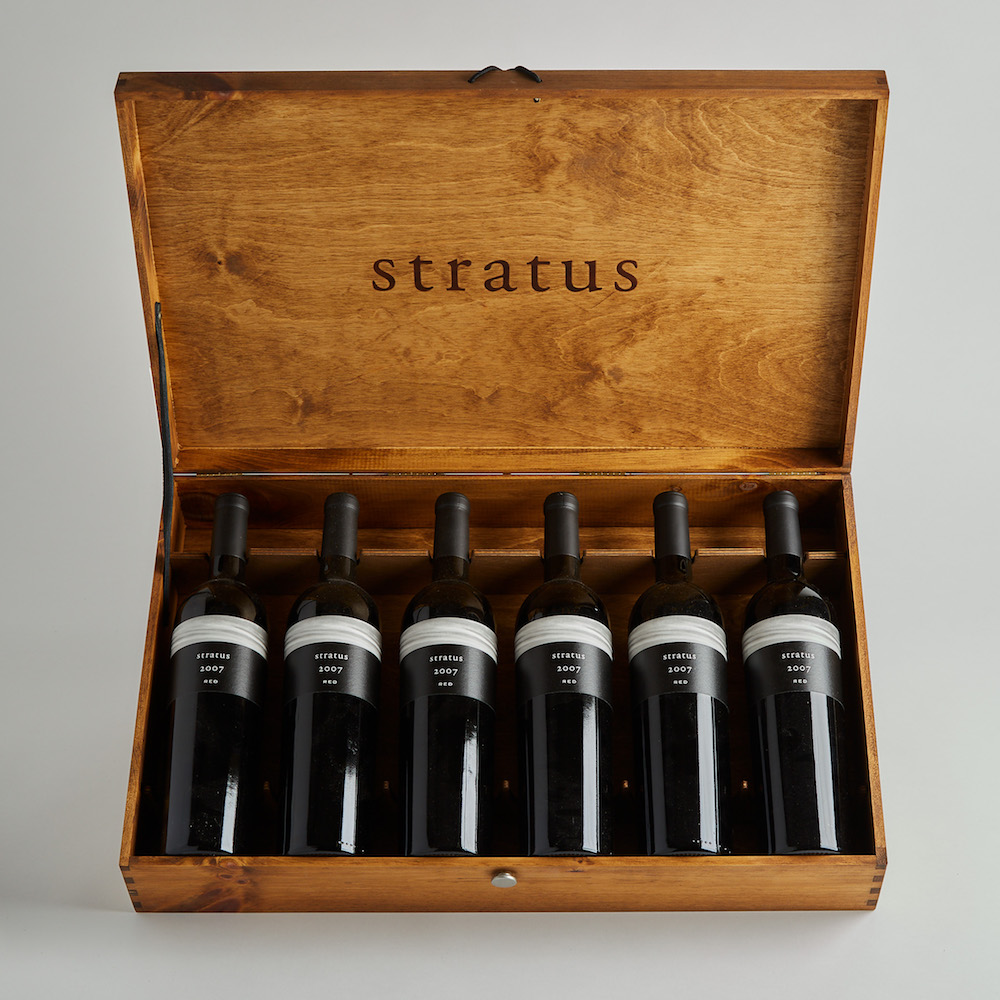
Stratus Red 2007, Lot #536 (six bottles, original wooden box, estimate per lot $200-$400, original score was 4.5 stars) — The flagship red assemblage, the one voted by its peers most likely to succeed, and the reason Stratus makes wine in the first place. It lives up to its billing. Though young, it’s already showing a decadent nose of persistent black fruits, cinnamon and cloves. It’s big, vibrant and powerful in the mouth yet maintains its youthful restraint. You sense with the endless finish that this is a long-lived and glorious wine. Enjoy!
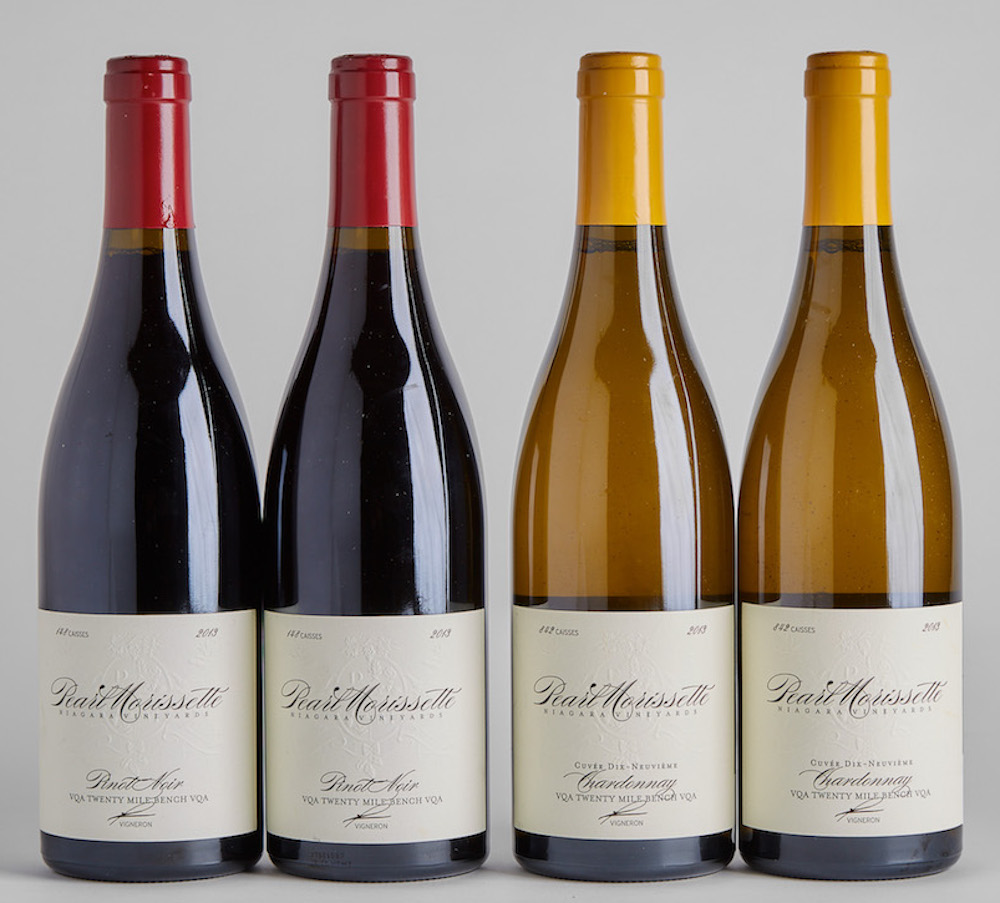
Pearle Morissette Cuvée Dix-Neuvième Chardonnay 2013 (2) and Pinot Noir 2013 (2), Lot #579 (four bottles, estimate per lot $100-$300)
Pearl Morissette Cuvee Dix-Neuvieme Chardonnay 2013 ($35, wasn’t bottled when reviewed, so no score given) — A completely different expression of Chardonnay from Francois Mosissette. Noticeable reduction with citrus, nougat and sweet subtle spices on the nose. The texture is gorgeous with spicy vanilla, pear and a tangy vein of citrus through the finish.
Pearl Morissette Pinot Noir 2014 and 2013 ($25, not scored) — These were both unfinished wines but tasted with Morissette for perspective. The 2014 shows heavy scented lavender, cherry, cassis and light toasted spice. It’s built in a more masculine style with meaty cherry and blueberry fruit with an earthy finish. The 2013 will be bottled soon and shows rich cassis, bramble, blueberry pie and raspberry bush on the nose. It rides on a lovely beam of firm tannins with uplifting acidity.






Comment here